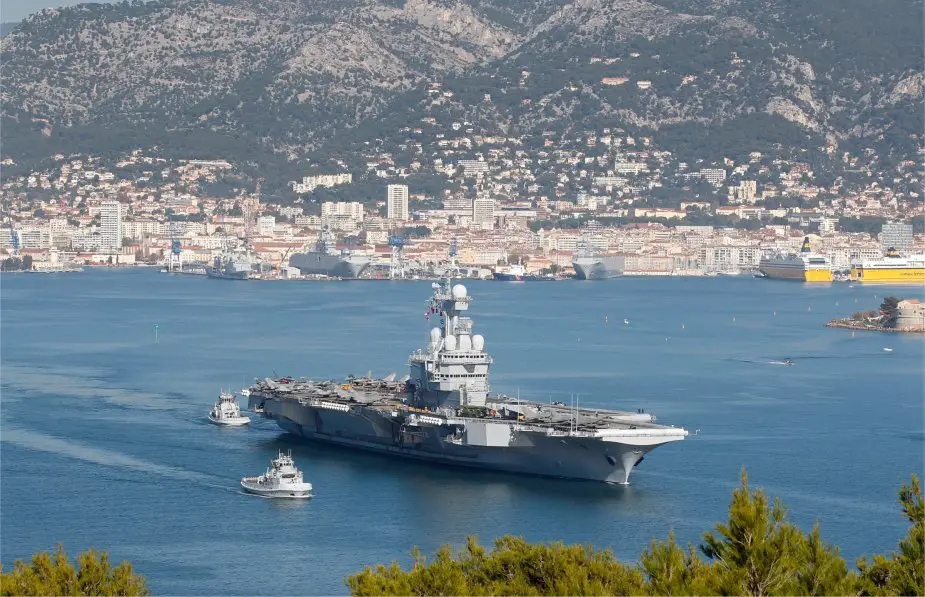According to a press release published by MBDA on July 21, 2021, the remote assistance service deployed by Naval Group and MBDA for the French Navy achieves several objectives: provide prompt diagnostics and a repair solution to naval systems users in all locations and in all circumstances.
Follow Navy Recognition on Google News at this link
 French aircraft carrier Charles de Gaulle (Picture source: Wavy)
French aircraft carrier Charles de Gaulle (Picture source: Wavy)
Remote assistance is a secure, end-to-end encrypted multimedia communication system linking the ship with onshore support facilities. It enables the crew to set up a fully confidential, real-time, dialogue with the French Navy and other state and/or industry experts to; assist diagnostics in the case of breakdowns; provide greater autonomy for the maintenance personnel; help with the preparation for maintenance periods on returning from missions. Remote assistance can thus help improve the availability of ships in operation.
Deployment of remote assistance has already begun to the multi-mission frigates (FREMM) and the aircraft carrier Charles de Gaulle, as well as to the Toulon Fleet Support Service (SSF), the Brest SSF and connecting them with MBDA and Naval Group industrial sites.
The French aircraft carrier has a displacement of 42 thousand tons with a length of 262 m, a width of 64 m, and a height of 75 m.
The ship is equipped with two nuclear reactors K15. It is capable of speeds up to 27 knots and has an autonomy of 45 days.
The aircraft carrier is armed with two 8-container launchers of Aster-15 anti-aircraft missiles and two 6-container launchers of Sadral anti-aircraft missiles.
It accommodates 40 aircraft, including the new Rafale SU 0 class, the Super Etendard (to be replaced by the Rafale SU 2 in 2005), and E-2C Hawkeye early-warning aircraft, as well as several helicopters. There are two catapults, each capable of launching an aircraft every minute. Propulsion is provided by two nuclear reactors of the same design as those used for the new-generation SSBNs.



